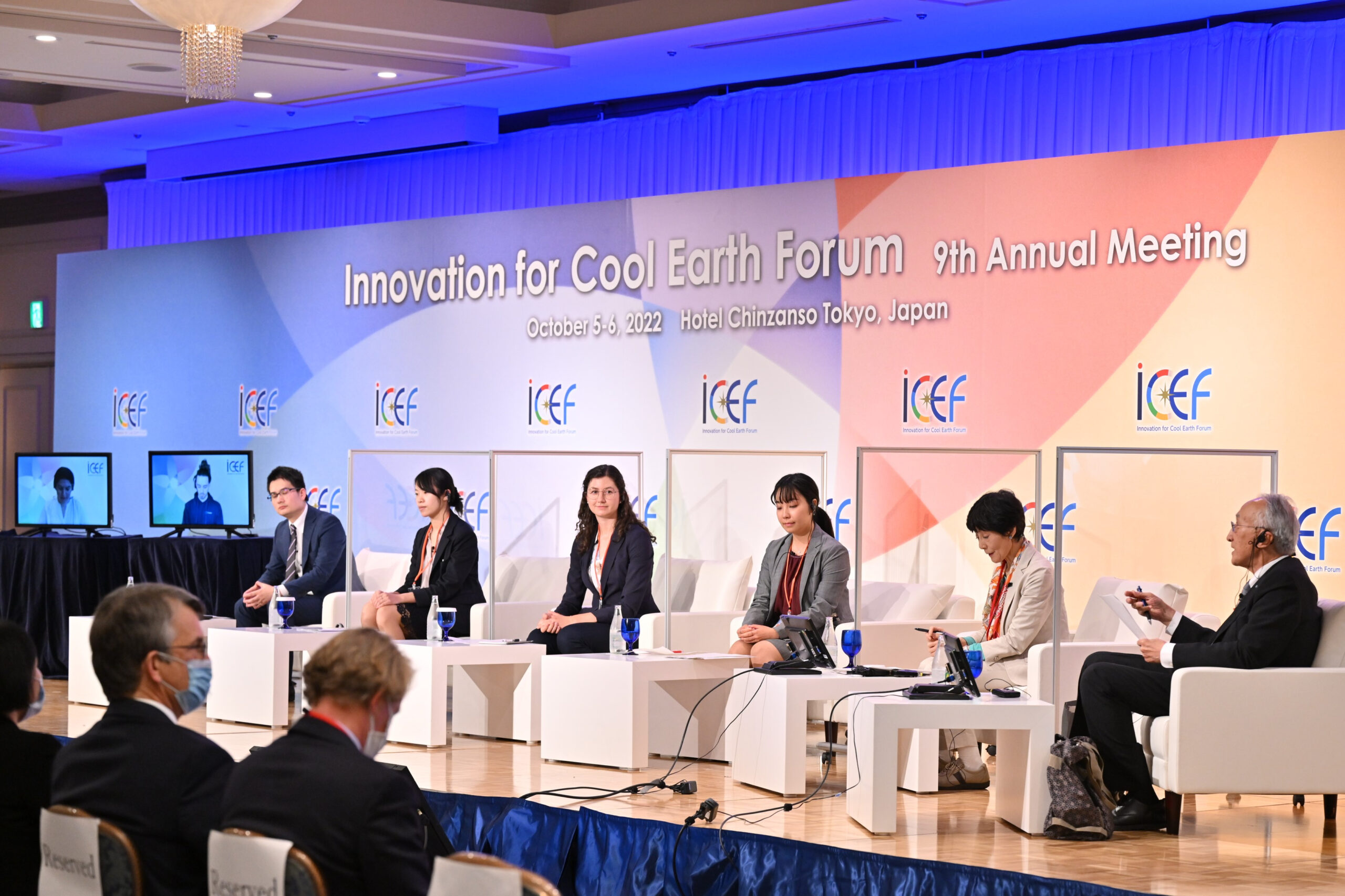Ministry of Economy, Trade and Industry (METI) and New Energy and Industrial Technology Development Organization (NEDO) hosted “Innovation for Cool Earth Forum 9th Annual Meeting (ICEF2022)” as part of “TOKYO GX WEEK” which holds 10 international conferences in the field of energy and environment.

Subscribe to our Telegram channel to get a daily dose of business and lifestyle news from NHA – News Hub Asia!
ICEF2022 is the international conference which brings experts of industry, academia and governments from the world together to discuss “innovation” as the key to solving global warming. A total of 15 sessions were held, attended by about 1,600 people from governments, international organizations, companies, and academia in 87 countries/regions.
The Keynotes included dialogue and speeches on the status of energy security, the importance and necessity of innovation to address it, and the innovation that are attracting attention while having various barriers for achieving carbon neutrality.
- Keynote 1: Pre-recorded Dialogue between Dr. Fatih Birol, Executive Director of International Energy Agency (IEA) and Mr. TANAKA Nobuo, Chair of ICEF Steering Committee
- Keynote 2: Video Message from Mr. Gerd Müller, Director General of the United Nations Industrial Development Organization (UNIDO)
- Keynote 3: Pre-recorded Dialogue between Mr. Francesco La Camera, Director-General of International Renewable Energy Agency (IRENA) and Mr. TANAKA Nobuo, Chair of ICEF Steering Committee
- Keynote 4: In person Speech by Mr. Rahm Emanuel, Ambassador Extraordinary and Plenipotentiary of the United States of America to Japan
In each session, under the theme of “Low-Carbon Innovation in a Time of Crises,” lively discussions were developed about policy innovation, CDR (Carbon Dioxide Removal technology), sustainable nuclear systems, a sustainable value chain in the age of resilience: Critical Metals and Minerals, and more. As the result, ICEF2022 issued a statement based on these series of discussions.
Each session is distributed on-demand on ICEF’s YouTube channel.
https://www.youtube.com/channel/UC7ouNL9NbvDomDTfiubi8iw
Moreover, the roadmaps for “Low-Carbon Ammonia” and “Blue Carbon” were released. ICEF will give presentation for these roadmaps in COP27 (the 27th Conference of the Parties of the UNFCCC) held in Egypt and in BNEF held in Shanghai in November 2022.
[Statement]
Under the ICEF2022 main theme of “Low -Carbon Innovation in a Time of Crisis”, the statement addresses the crises we face, the opportunities under such uncertainties and risks, and the importance of diversified approaches to materialize opportunities. Focusing on the need for accelerated action by 2030 and action-oriented innovation, it emphasizes innovation in policy making and innovation for transitions. As a technology innovation, a wide range of technological options for both the supply-side such as carbon dioxide removal and utilization, nuclear, hydrogen and synthetic fuels in heat and transport sector, and critical minerals and enhancing energy efficiency and utilizing renewables in all sectors on demand-side are emphasized.
The full text of statement is at the bottom of this release.
[Roadmap]
ICEF publishes innovation roadmaps for carbon dioxide utilization, Direct Air Capture (DAC), Industrial Heat Decarbonization, Biomass Carbon Removal and Storage (BiCRS) and Carbon Mineralization with the potential to contribute significantly to long-term Net Zero Emissions. This year’s Low-Carbon Ammonia roadmap is the 10th anniversary ICEF roadmap. A booklet is also published to commemorate the 10th roadmap.
1. ICEF2022 Roadmap: Low-Carbon Ammonia (Draft)
ICEF Low-Carbon Ammonia Roadmap explores a topic that Ammonia (NH3) being one of the building blocks of modern society. Low-carbon ammonia is produced by the methods such as capturing the CO2 emitted in production processes and storing that CO2 underground or in long-lived products, or by separating hydrogen from water using electricity from a zero-carbon power source. Low-carbon ammonia could then be used to substitute for carbon-intensive fuels or as a store of surplus renewable power, providing significant additional emissions reductions. The roadmap examines the global ammonia industry today, strategies for reducing the cost of low-carbon ammonia production, infrastructure needs for scaling up low-carbon ammonia, different ways that low-carbon ammonia could be used to reduce emissions in the years ahead, the safety and local environmental impacts of expanding ammonia production and use, R&D needs and policy options.
2. ICEF2022 Roadmap: Blue Carbon (Outline)
This ICEF Blue Carbon Roadmap summarizes the potential of blue carbon as one of the negative emission technologies to achieve net-zero emissions. In the roadmap, blue carbon is defined as the CO2 captured and stored by mangroves, tidal marshes, seagrass beds, and natural macroalgae beds as well as macroalgal farming such as kelp and sargassum. The mitigation potential of blue carbon globally is estimated at 0.5-1.5 GtCO2E/year by the year 2050. The roadmap summarizes the scientific knowledge currently available, areas of research and development expected in the future, and institutional, policy, and environmental considerations that may arise in the future. It then presents pathways to increase blue carbon absorption and reduce emissions from the loss of the ecosystems.
A draft of the ICEF Low-Carbon Ammonia Roadmap and an outline of ICEF Blue Carbon Roadmap were released at ICEF2022. In addition to the discussion at ICEF2022, public comments are welcomed. After reflecting the comments, the official Low Carbon Ammonia Roadmap and a draft Blue Carbon Roadmap will be released at COP27. For more information, please visit our website.
https://www.icef.go.jp/roadmap/?utm_source=media&utm_medium=bw&utm_campaign=rm
Comments should be sent by Saturday, October 15 (JST) to:
- Low-Carbon Ammonia: icefroadmap22@gmail.com
- Blue Carbon: ICEFRoadmap2022-bc@convention.co.jp
Source: ICEF2022

